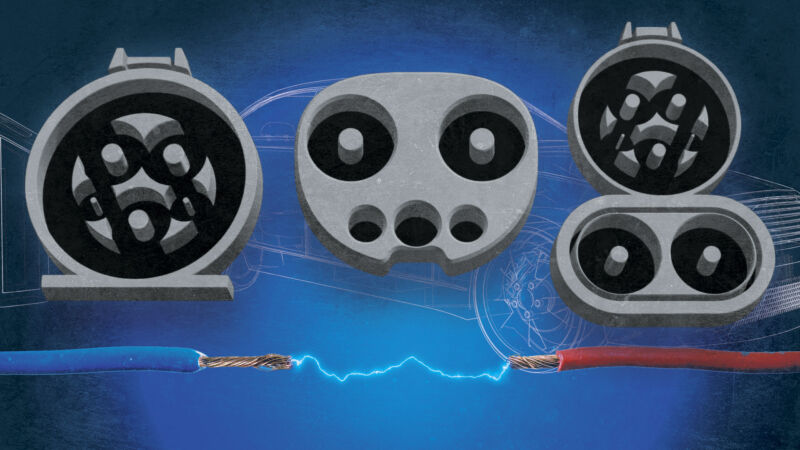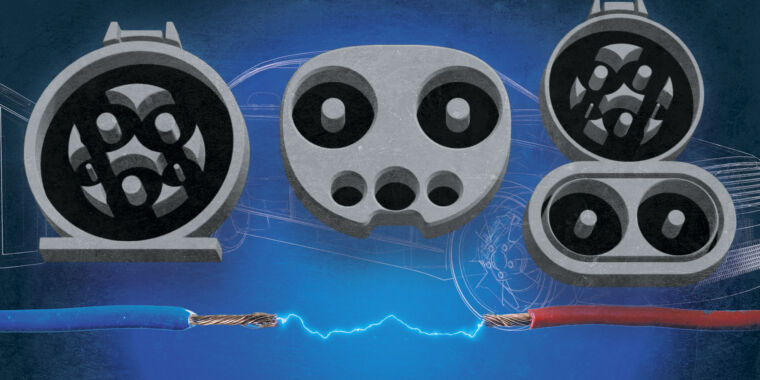
Aurich Lawson | Getty Images
A significant factor that scares people away from electric vehicles is confusion around charging. Every gas station in the land is fitted with nozzles that will fill any gasoline-powered car’s fuel tank. But not all EVs use the same plug, and then there’s the matter of alternating current (AC) versus direct current (DC) systems. And what do the different levels of charging mean?
The good news is that it’s not that complicated, and we’re here to explain everything you need to know.
EVs require electricity to charge, as the “E” in EV suggests. But that electricity can be AC, like the appliances in your home, or DC, like a USB device, only many times more powerful.
First, a quick note on charging times. Many factors can affect how long charging takes, including the capacity of the battery, its state of charge at the start of the session, the battery’s temperature at the start of the session, the actual cell chemistry, and, of course, how much power can be drawn by the EV’s battery. Charges can range from a few miles of range added every hour, if you’re relying on a household 120 V socket, to as much as 100 miles of range in 10 minutes if you’re charging from a powerful DC charger.
It’s also worth noting that an EV’s battery has a gross capacity that is larger than the useable capacity. Automakers build some overhead into the pack that never gets fully depleted, and we have seen some car companies increase the net capacity with software updates as they become more comfortable with monitoring battery life.
On that topic, remember that any EV sold in the US must have an eight-year/100,000-mile battery warranty. And despite any scary stories you may have heard, there is no reason to think an EV’s battery will have to be replaced any sooner than a gasoline-powered car needs a new engine. Finally, since Ars is a US-based site for a primarily US-based audience, this article is focused on US EVs and chargers.
Level 1
Let’s start with AC charging, the least-powerful option that takes the longest time to recharge a battery. Most EV owners can charge at home, and at-home charging means using AC. AC charging is also more kind to a lithium-ion EV battery than fast charging, although, again, the myth of deteriorating EV batteries is a misconception; your battery should last the lifetime of the car, just as an engine or fuel tank does.
The cheapest way to do AC charging, and the slowest, is to use a normal 120 V outlet. That’s unlikely to supply the car’s battery with much more than 1.5 kW, and since EV batteries are mostly in the range of 60–120 kWh, you can see you’ll be in for an impractically long wait if you want to take a battery from a low state of charge back to 100 percent. In fact, many OEMs have stopped listing level 1 charge times in their press kits.
But AC charging will add between two to four miles of range each hour, and plenty of EV owners do use level 1 charging, particularly on older EVs with smaller batteries, like the Chevrolet Bolt or Nissan Leaf. And while a full charge might take several days to charge starting from empty if it has a big battery (like a Hummer EV), an EV primarily used for short trips is much easier to keep topped off so that each morning starts with a full battery.








